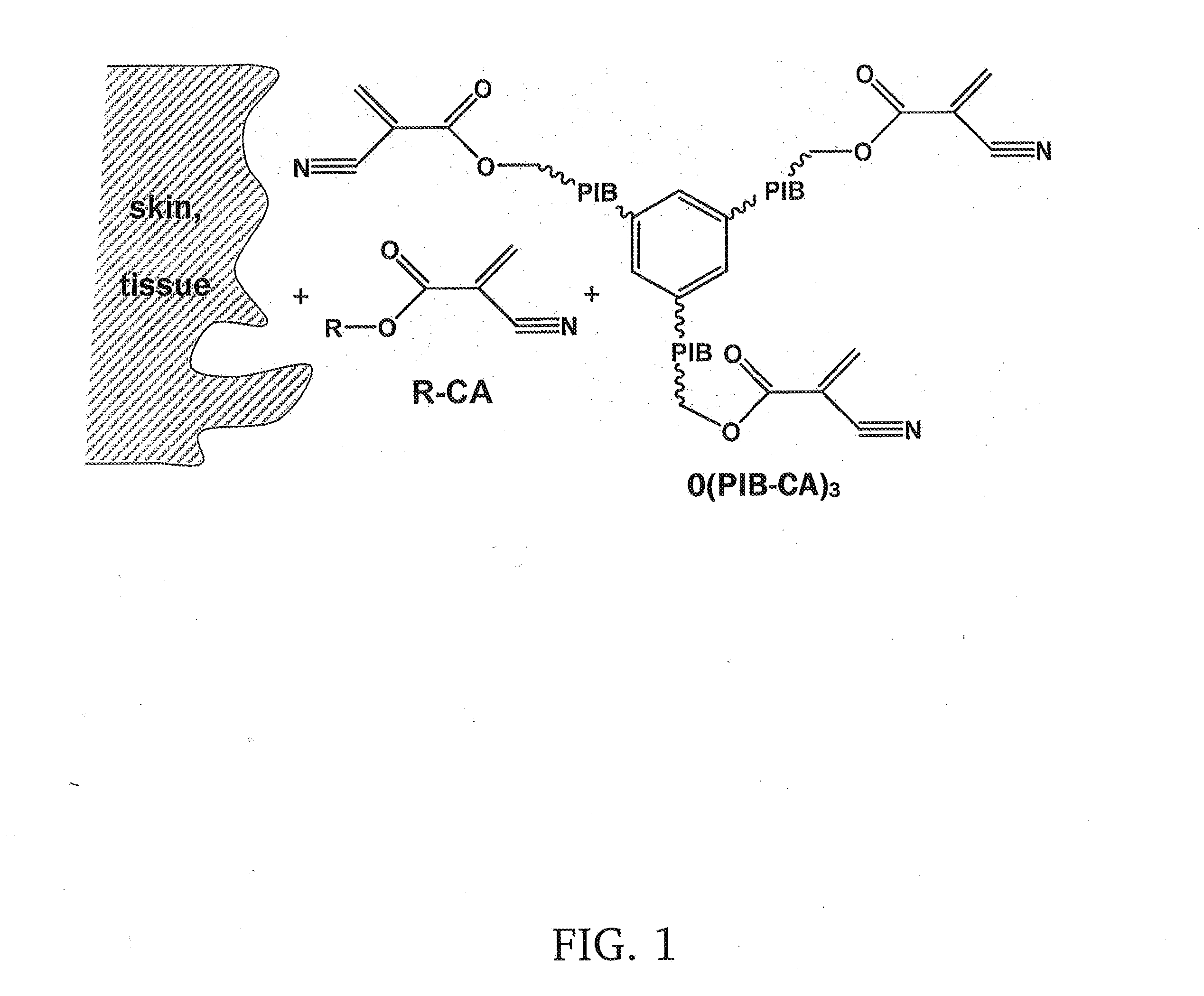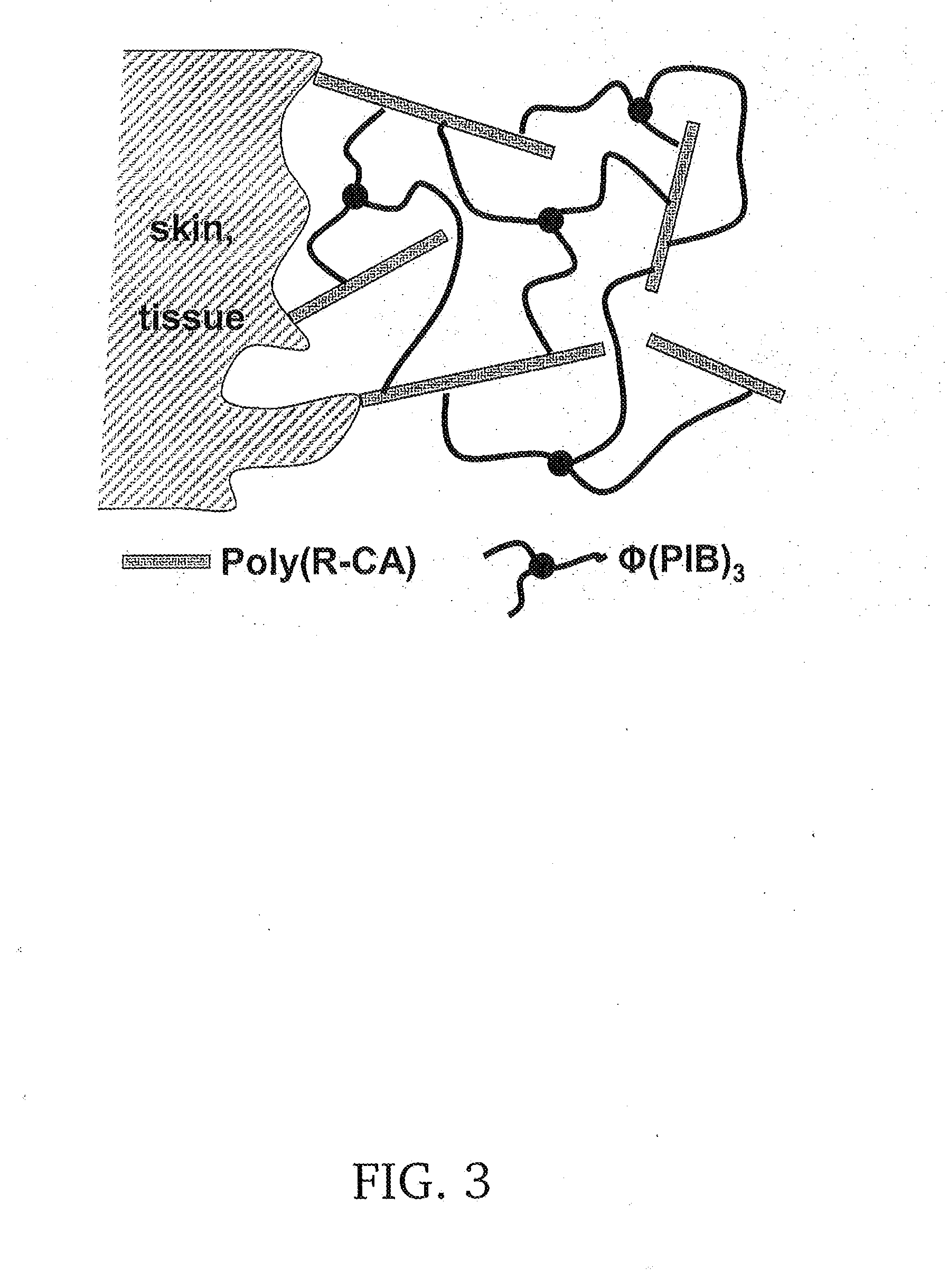Poly(octylcyanoacrylate)-polyisobutylene polymer conetwork, method for the production thereof and uses thereof
a polymer and polyisobutylene technology, applied in the field of polyisobutylene-based conetwork, can solve the problems of accelerated disc degeneration, inability to effectively heal the annulus fibrosa during discectomies, and inability to effectively heal the compromised disc, etc., to achieve the effect of high elongation and sufficient strength
- Summary
- Abstract
- Description
- Claims
- Application Information
AI Technical Summary
Benefits of technology
Problems solved by technology
Method used
Image
Examples
Embodiment Construction
[0026]As noted hereinabove, the present invention seeks to provide a novel polymer conetwork composition of matter suitable for any of a number of biomedical applications, from wound closure and healing of skin tissue, to sealant for surgical cuts, to a sealant for surgical cuts and punctures to treat lumbar disc herniation. The composition is a conetwork comprising a copolymer of 2-n-octyl-cyanoacrylate (Oct-CA) and cyanoacrylate-terminated tri-telechelic polyisobutylene (Ø(PIB-CA)3). The polymerization of Oct-CA with Ø(PIB-CA)3 is rapidly initiated by the skin, blood or other living (or dead) tissue when a mixture of the liquid starting materials is sprayed, coated or otherwise applied over wounds or surgical cuts. In one embodiment, the composition may be a sprayed coating or film that rapidly solidifies into a robust rubbery protecting barrier. The tissue, e.g., skin, or more accurately, the nucleophilic groups (—OH, NH2, etc.) on the surface of the skin, is, in effect, the “cat...
PUM
| Property | Measurement | Unit |
|---|---|---|
| elongation | aaaaa | aaaaa |
| Young's Modulus | aaaaa | aaaaa |
| tensile strength | aaaaa | aaaaa |
Abstract
Description
Claims
Application Information
 Login to View More
Login to View More - R&D
- Intellectual Property
- Life Sciences
- Materials
- Tech Scout
- Unparalleled Data Quality
- Higher Quality Content
- 60% Fewer Hallucinations
Browse by: Latest US Patents, China's latest patents, Technical Efficacy Thesaurus, Application Domain, Technology Topic, Popular Technical Reports.
© 2025 PatSnap. All rights reserved.Legal|Privacy policy|Modern Slavery Act Transparency Statement|Sitemap|About US| Contact US: help@patsnap.com



